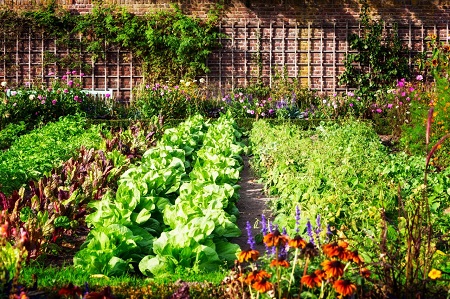Are you looking to grow your own fresh and delicious produce at home? One of the best ways to do so is by starting your own vegetable garden. Not only is it a great way to save money, but it’s also an excellent way to ensure that you have access to fresh and healthy produce year-round. In this article, we’ll cover the basics of vegetable garden design, including everything from choosing the right location and soil type to selecting the right plants and caring for them throughout the growing season.
Choosing the Right Location for Your Vegetable Garden
When it comes to vegetable garden design, the location is key. Ideally, you want to choose a spot that gets plenty of sunlight throughout the day, as most vegetables require at least six hours of direct sunlight to grow properly. Additionally, you’ll want to select a location that has well-draining soil and is away from any areas that may be prone to flooding.
Preparing the Soil for Your Vegetable Garden
Once you’ve chosen the right location for your vegetable garden, it’s time to prepare the soil. The first step is to remove any weeds or debris from the area. You can do this by hand or by using a garden hoe. Once you’ve cleared the area, you’ll want to add a layer of compost or aged manure to the soil to improve its quality and nutrient content.
Choosing the Right Plants for Your Vegetable Garden
When it comes to choosing the right plants for your vegetable garden, there are a few things to consider. First, you’ll want to select plants that are well-suited to your climate and growing conditions. Additionally, you’ll want to choose plants that are appropriate for the size of your garden and your level of experience. Some great options for beginners include tomatoes, peppers, cucumbers, and lettuce.
Planting Your Vegetable Garden
When it’s time to plant your vegetable garden, there are a few things to keep in mind. First, make sure that you’re planting at the right time of year for the plants you’ve chosen. You can find this information on the seed packet or by doing a quick online search. Additionally, you’ll want to make sure that you’re spacing your plants appropriately and planting them at the proper depth.
Read more: Small Garden Design
Caring for Your Vegetable Garden
Once your vegetable garden is planted, it’s important to care for it properly to ensure a bountiful harvest. This includes watering your plants regularly, fertilizing them as needed, and keeping an eye out for pests and diseases. Additionally, you’ll want to make sure that you’re pruning your plants as needed to promote healthy growth.
Harvesting Your Vegetables
As your vegetables begin to mature, it’s important to harvest them at the right time. This will vary depending on the type of vegetable, but in general, you’ll want to harvest when the fruit or vegetable is fully ripe and has reached its full size.
Storing Your Vegetables
Once you’ve harvested your vegetables, it’s important to store them properly to ensure that they stay fresh and delicious for as long as possible. This includes storing them in a cool, dry place and avoiding any areas that may be prone to moisture or temperature fluctuations.
Conclusion
Growing your own vegetables can be a fun and rewarding experience. By following the tips outlined in this article, you’ll be well on your way to creating a beautiful and bountiful vegetable garden of your own. So what are you waiting for? Start planning your garden today and enjoy the fresh and delicious produce that comes with it!
